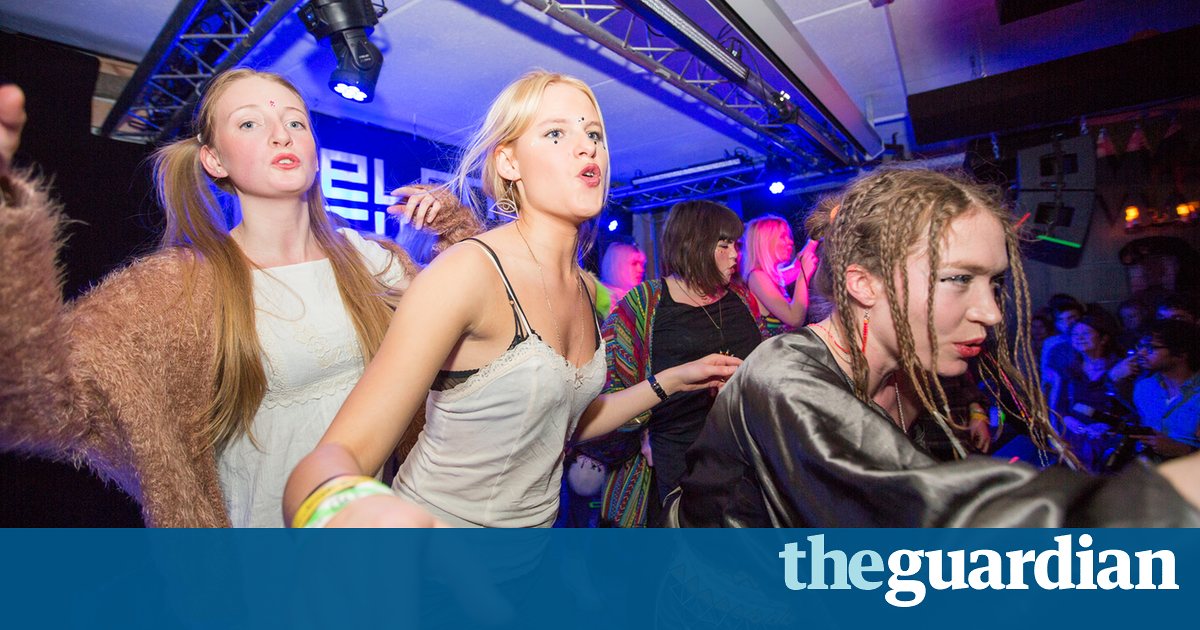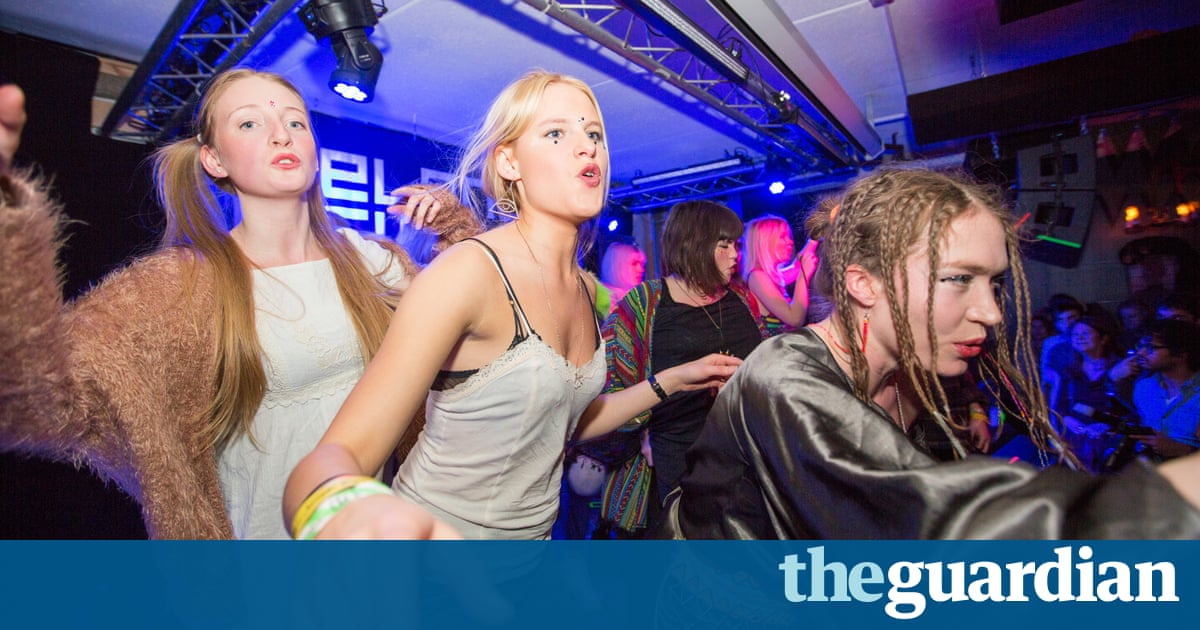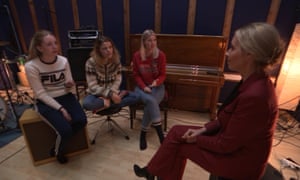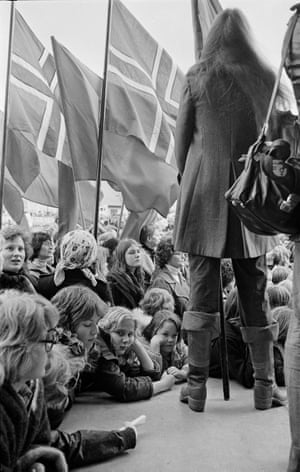Why Iceland is the best place in the world to be a woman

Since 1975, the Nordic country has blazed the trail in gender equality and now, from infancy to maternity, women and girls enjoy a progressive lifestyle. But how did they achieve it?

Rebekka is so tiny that, even on her tiptoes, arms aloft, she cannot reach. So her teacher lifts her up to the unvarnished wooden monkey bar. One, two, three, her classmates count. She hangs on, determinedly. When she reaches 10, she jumps to the ground. I am strong, she shouts proudly.
Its an ordinary morning for this single-sex class of three-year-olds at Laufsborg nursery school in Reykjavik. No dolls or cup-cake decorating on the lesson plan here. Instead, as Margrt Pla lafsdttir, the schools founder, tells me: We are training [our girls] to use their voice. We are training them in physical strength. We are training them in courage.
Its a fascinating approach to education. And a popular one. In a country of only 330,000 people, there are 19 such primary and nursery schools, empowering girls from an early age.
For the past six years, Iceland has topped the World Economic Forums gender gap index and looks likely to do so again this week. The Economist recently named Iceland the worlds best place for working women in comparison, the UK came in at No. 24. lafsdttirs philosophy seems to sit well with the nations progressive accomplishments, but her network of schools has been going for less than 20 years. So, if preschoolers trained in feminism arent the reason for this gender success story, what is?
History may provide us with clues. For centuries, this seafaring nations women stayed at home as their husbands traversed the oceans. Without men at home, women played the roles of farmer, hunter, architect, builder. They managed household finances and were crucial to the countrys ability to prosper.

By 1975, Icelandic women were fed up. It wasnt just that they werent being properly paid for their labour, they also were sick of their lack of political representation: only nine women had ever won seats in parliament. So, against the backdrop of the global feminist movement, Icelands women decided to take things into their own hands.
An outpouring of women on to the streets was, by then, a well-trodden form of activism. In 1970, tens of thousands of women had protested on Fifth Avenue in Manhattan. In the UK, that same year, 20,000 women marched in Leeds against discriminatory wages. But what made Icelands day of protest on 24 October 1975 so effective was the number of women who participated. It was not just the impact of 25,000 women which, at the time, was a fifth of the female population that gathered on the streets of Reykjavik, but the 90% of Icelands female population who went on all-out professional and domestic strike. Teachers, nurses, office workers, housewives put down tools and didnt go to work, provide childcare or even cook in their kitchens. All to prove how indispensable they were.
Thordis Loa Thorhallsdottir, CEO of a tourism company, was on the streets that day: I was 10 at the time, and I remember it very clearly, standing there with my mother, fighting. I can still feel the crowd and the power that was there. The big message was that if women dont work, the whole community is paralysed the whole society.
Grassroots activism at such a scale unsurprisingly had a significant material impact. Within five years, the country had the worlds first democratically elected female president Vigdis Finnbogadottir. Now in her 80s, this steely-eyed powerhouse tells me of the impact that day of protest had on her own career trajectory.
I would never have been elected in 1980 if it hadnt been for the womens day of action because when my predecessor announced that he was not going to stand again, the voices were immediately heard: now we have to have a woman among the candidates.

Other landmarks soon followed. An all-female political party the Womens Alliance was established. More women were elected to parliament; by 1999, more than a third of MPs were women.
And then, in 2000, parental leave legislation came into effect: whichevery person I spoke to highlighted this moment as key to Icelands march to the top of the gender-equality table. Today, every parent receives three months paid leave that is non-transferable. Parents then have an additional three months to share as they like.
Because the pay is significant 80% of salary up to a ceiling of 2,300 a month and because its on a use-it-or-lose-it basis, 90% of Icelandic fathers take up their paternal leave. This piece of social engineering has had a profound impact on men as well as women. Not only do women return to work after giving birth faster than before, they return to their pre-childbirth working hours faster, too. Research shows that, after taking the three months leave, fathers continue to be significantly more involved in childcare and do more housework. Sharing the parental responsibilities and chores from the beginning, it seems, makes a difference.
Its a good place to be a woman, says Thorhallsdottir. And it is. Almost 80% of Icelandic women work. Thanks to mandatory quotas, almost half of board members of listed companies are now women, while 65% of Icelands university students and 41% of MPs are female.
Yet, women I met on my journey were also clear that the country has a long way to go. They still have less economic power than men only 22% of managers are women; only 30% of experts on TV are women and, overall, men earn 14% more. Icelands record on all of these fronts is better than most countries; in the UK, womens hourly pay is 18% less than men.
It is the gender pay gap that puzzles me the most. How can it be that it is still so significant given the huge efforts the state has put into mitigating the mummy penalty? Not only when it comes to parental leave, but with heavily subsidised nursery schools and after-school care?
Explanations vary: from women going into less well-paid professions, to the penalty paid for working part-time that weve found in the UK as well, to the time it takes for employers implicit gender biases to shift.
Steiney Skuladottir, one of Reykjavkurdtur (or the Daughters of Reykjavik) a feminist rap collective who rap about gender issues puts the blame in part on womens reluctance to ask for sufficient pay compensation. Fellow rapper Bloer Johanusdottir concurs. Its like we cant be cocky. We are supposed to be modest.
Back at the school, lafsdttir has this to say: If you are learning from a young age that you are not getting your rightful share, if you are taught and trained in waiting, what do you expect?
The Icelandic government has pledged to close the gender pay gap by 2022. And the women of the country continue to be highly organised and socially aware; an astonishing one- third of Icelands women are members of a Facebook group ironically named Beauty Tips in which they actively discuss gender issues.
History teaches us that progress doesnt come about in a vacuum and that grassroots pressure plus investment in politics is a very powerful catalyst for change. In Iceland, it seems that they have both. In spades.
Noreena Hertz is economics editor of ITV News. Her report from Reykjavik, On Assignment, airs at 10.40pm on Tuesday on ITV.